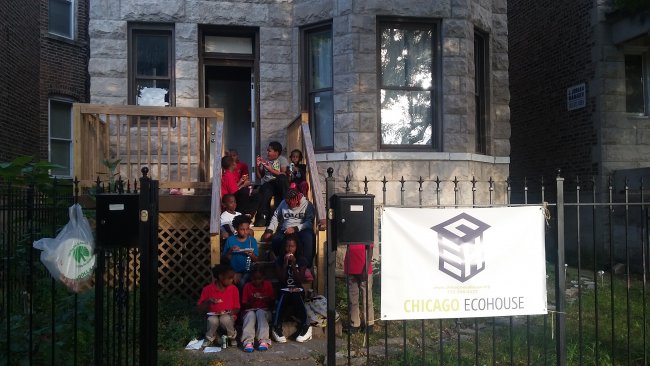Do Small Organizations Win ULIEAs? You Betcha!
Every year at ULIEA, we are on the lookout for NGOs leading the way in innovative E-STEM programming. With up to $100,000 on the line, you might think small organizations from across the U.S. and Canada would be breaking down our doors to apply. The reality? Smaller organizations often shy away, fearing their small-budget programs cannot compete with the larger, more established programs.
We’re here to put that myth to rest. Not only can small organizations win, but they DO win. One past winning program served as few as 60 youth each year and another program operated on a budget of about USD $20,000! And just imagine the difference $100,000 (or $50,000 or even $25,000) can make in these organizations’ operations.
Quilen Blackwell, president and founder of Chicago Eco House — one of our smaller org winners — shares that he too initially believed they would not be able to compete with larger orgs. “Yes, most awards of this magnitude have ‘filters’ — like requiring audited financials (which can cost at least $5,000), minimum budget size, and minimum amount of years in existence — that weed out smaller organizations. We were founded in 2014 with an all-volunteer staff and we definitely cannot afford to get our financials audited yet. Since, technically, this is an international award we thought that we wouldn't have a chance against some of the big wigs across the U.S. and Canada ... so, saying that we were shocked that we won is an understatement.”
Thankfully, Quilen didn’t let his hesitation stop him from applying. Without realizing it, there are many ways smaller orgs like Chicago Eco House actually have an advantage over their larger competitors. Kate Flinner from New Knowledge Organization Ltd., our partners in designing the application and moderating judging, explains, “Smaller orgs usually have simpler organizational structures, which often means fewer barriers to turning ideas into reality. As a result, they often have greater entrepreneurial spirit, making them more flexible with trying new things. Since this award focuses on innovation, that nimble and experimental approach serves small organizations very well during judging. Judges notice that small organizations try programing that larger and more established programs are afraid to pursue. Many small organizations are extremely resourceful as well, making their funds, equipment, and time cover a lot of ground in delivering programming to their communities. ULIEA judges look for creativity and resourcefulness in how programs are operated. In other words, small organizations have big ideas, big hearts, and big impact, which is what ULIEA loves.”
It’s not size that counts at ULIEA — it’s innovation, creativity and impact. The judging process strictly follows a set of priorities and a rubric and judges use the same priorities and rubric as they develop or review applications. The attributes judges look for in each application can be found in any organization regardless of size and type.
Kate does, however, have a few words of advice for potential small-org applicants: “I recommend staff at small organizations consider how they think about and present the impacts, outcomes, and results of their programs. Oftentimes, these orgs don’t have the resources to hire a person or company to help them evaluate their successes, leading them to believe their programs are uncompetitive. But there are many, many ways to effectively capture data about impacts. A good first step is for orgs to clarify how program activities lead to outcomes — they need to understand what success looks like given their org’s goals, audience, programs, etc. Then they can consider what types of information can demonstrate how well they’re achieving those outcomes. The information might include attendance rates, how often participants work on projects in their own time, testimonials from parents and community leaders, number of partners involved, improved outcomes for partner organizations, and the ways young people advocate for and implement solutions to environmental issues. In other words, evidence doesn’t have to be captured in surveys. I should point out that it’s helpful to gather evidence in the same way each year so orgs can show change over time.”
Quilen, too, had a few words of advice for on-the-fence applicants: “I would encourage a smaller organization to apply. I think ULIEA is more interested in proof of concept of a truly novel model than just seeing the traditional metrics of ‘youth served.’ To ULIEA's credit, they recognize the status quo in E-STEM education comes woefully short of fulfilling its lofty goals. So, they are on the hunt for anything and everything that could improve the overall field. As a smaller organization, we represent the ‘diamonds in the rough’ that often get ignored but have immense value with a little polish.” And Quilen would know the power of ULIEA, seeing as their award effectively doubled their operating budget!
We are so proud of all our winners — regardless of size or type — and the important and innovative work they’re doing for E-STEM. If we were to give last words of advice for the smaller organizations out there, it’d be this one simple thing: apply.
